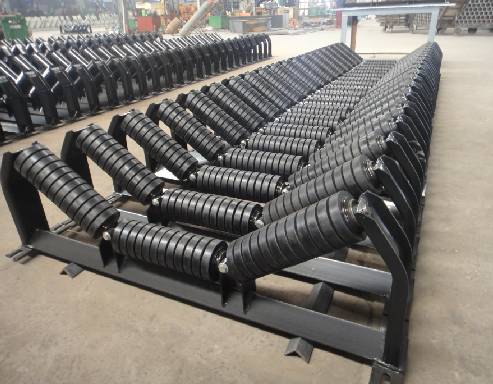 Afrikaans
Afrikaans  Albanian
Albanian  Amharic
Amharic  Arabic
Arabic  Armenian
Armenian  Azerbaijani
Azerbaijani  Basque
Basque  Belarusian
Belarusian  Bengali
Bengali  Bosnian
Bosnian  Bulgarian
Bulgarian  Catalan
Catalan  Cebuano
Cebuano  Corsican
Corsican  Croatian
Croatian  Czech
Czech  Danish
Danish  Dutch
Dutch  English
English  Esperanto
Esperanto  Estonian
Estonian  Finnish
Finnish  French
French  Frisian
Frisian  Galician
Galician  Georgian
Georgian  German
German  Greek
Greek  Gujarati
Gujarati  Haitian Creole
Haitian Creole  hausa
hausa  hawaiian
hawaiian  Hebrew
Hebrew  Hindi
Hindi  Miao
Miao  Hungarian
Hungarian  Icelandic
Icelandic  igbo
igbo  Indonesian
Indonesian  irish
irish  Italian
Italian  Japanese
Japanese  Javanese
Javanese  Kannada
Kannada  kazakh
kazakh  Khmer
Khmer  Rwandese
Rwandese  Korean
Korean  Kurdish
Kurdish  Kyrgyz
Kyrgyz  Lao
Lao  Latin
Latin  Latvian
Latvian  Lithuanian
Lithuanian  Luxembourgish
Luxembourgish  Macedonian
Macedonian  Malgashi
Malgashi  Malay
Malay  Malayalam
Malayalam  Maltese
Maltese  Maori
Maori  Marathi
Marathi  Mongolian
Mongolian  Myanmar
Myanmar  Nepali
Nepali  Norwegian
Norwegian  Norwegian
Norwegian  Occitan
Occitan  Pashto
Pashto  Persian
Persian  Polish
Polish  Portuguese
Portuguese  Punjabi
Punjabi  Romanian
Romanian  Russian
Russian  Samoan
Samoan  Scottish Gaelic
Scottish Gaelic  Serbian
Serbian  Sesotho
Sesotho  Shona
Shona  Sindhi
Sindhi  Sinhala
Sinhala  Slovak
Slovak  Slovenian
Slovenian  Somali
Somali  Spanish
Spanish  Sundanese
Sundanese  Swahili
Swahili  Swedish
Swedish  Tagalog
Tagalog  Tajik
Tajik  Tamil
Tamil  Tatar
Tatar  Telugu
Telugu  Thai
Thai  Turkish
Turkish  Turkmen
Turkmen  Ukrainian
Ukrainian  Urdu
Urdu  Uighur
Uighur  Uzbek
Uzbek  Vietnamese
Vietnamese  Welsh
Welsh  Bantu
Bantu  Yiddish
Yiddish  Yoruba
Yoruba  Zulu
Zulu Understanding the Functionality of Non-Drive Pulleys in Mechanical Systems
Understanding Non-Drive Pulleys Types, Functions, and Applications
Pulleys are essential components in various mechanical systems, playing a crucial role in the transmission of power and motion. Among the different types of pulleys, non-drive pulleys hold significant importance, especially in contexts where load manipulation and system efficiency are priorities. This article delves into the concept of non-drive pulleys, their types, functions, and applications across various industries.
What is a Non-Drive Pulley?
A non-drive pulley is a wheel on an axle or shaft that serves to guide or redirect a rope, cable, or belt without being directly driven by an external force. Unlike drive pulleys, which actively contribute to motion by supplying power to the system, non-drive pulleys primarily function as support elements to assist in the movement of load through mechanical advantage or tension redistribution.
Types of Non-Drive Pulleys
1. Idler Pulleys Idler pulleys are the most common type of non-drive pulley. They are used to change the direction of a belt or cable and are typically found in conveyor systems. By redirecting the path of a belt, idler pulleys help maintain tension and align the system, promoting smoother operation and reducing wear.
2. Tensioner Pulleys Tensioner pulleys maintain the desired amount of tension in a belt drive system. They are often spring-loaded and adjust automatically as the belt wears out or elongates, ensuring consistent performance. This type of pulley is vital in automotive applications, where maintaining optimal tension is crucial for engine efficiency and reliability.
3. Guide Pulleys Guide pulleys serve to direct cables or belts along a specific path. They prevent misalignment and ensure that the moving component follows the intended route, which is particularly important in applications like lifting systems, where precision is necessary to ensure safety and efficacy.
4. Return Pulleys Return pulleys are used in systems where the belt or cable must loop back after reaching the end of its travel. They help in managing the length of the belt or cable, ensuring that the returning segment does not interfere with the operational parts of the machinery.
non drive pulley

Functions of Non-Drive Pulleys
The primary functions of non-drive pulleys include
- Direction Change Non-drive pulleys are ideal for changing the direction of force applied to a cable or belt, helping in the redirection of mechanical energy. - Tension Management They help maintain optimal tension in belt-driven systems, contributing to increased durability and performance. - Load Distribution By redistributing loads and stresses across multiple points, non-drive pulleys enhance the lifespan of belts and cables, reducing the risk of failure. - Alignment Assistance Proper alignment of belts and cables is crucial for efficiency; non-drive pulleys ensure that the operational paths remain aligned.
Applications of Non-Drive Pulleys
Non-drive pulleys are employed in a wide array of industries and applications
- Manufacturing and Automation In conveyor systems, non-drive pulleys play a vital role in transporting materials efficiently while ensuring smooth motion. - Automotive Engineering Tensioner and idler pulleys are commonly found in automotive belt systems, crucial for the functionality of engines and other mechanical systems. - Construction Equipment Non-drive pulleys are utilized in cranes and hoists, facilitating the lifting and movement of heavy materials. - Robotics In robotic systems, non-drive pulleys assist with movement, allowing for precise control over mechanical arms and other components. - Theatrical Rigging Non-drive pulleys are essential in stage setups, providing smooth and silent motion for lighting and stage elements.
Conclusion
In conclusion, non-drive pulleys are fundamental components that enhance the efficiency and efficacy of various mechanical systems. By understanding their types, functions, and applications, one can better appreciate the critical role these pulleys play in ensuring optimal performance across many fields. Whether in industrial settings, automotive applications, or entertainment environments, non-drive pulleys contribute significantly to the seamless operation of machinery and systems. As technology continues to evolve, the design and application of non-drive pulleys will likely become even more sophisticated, further unlocking their potential in modern engineering challenges.
-
Revolutionizing Conveyor Reliability with Advanced Rubber Lagging PulleysNewsJul.22,2025
-
Powering Precision and Durability with Expert Manufacturers of Conveyor ComponentsNewsJul.22,2025
-
Optimizing Conveyor Systems with Advanced Conveyor AccessoriesNewsJul.22,2025
-
Maximize Conveyor Efficiency with Quality Conveyor Idler PulleysNewsJul.22,2025
-
Future-Proof Your Conveyor System with High-Performance Polyurethane RollerNewsJul.22,2025
-
Driving Efficiency Forward with Quality Idlers and RollersNewsJul.22,2025





























